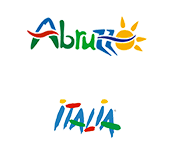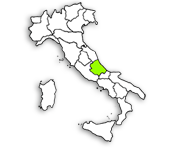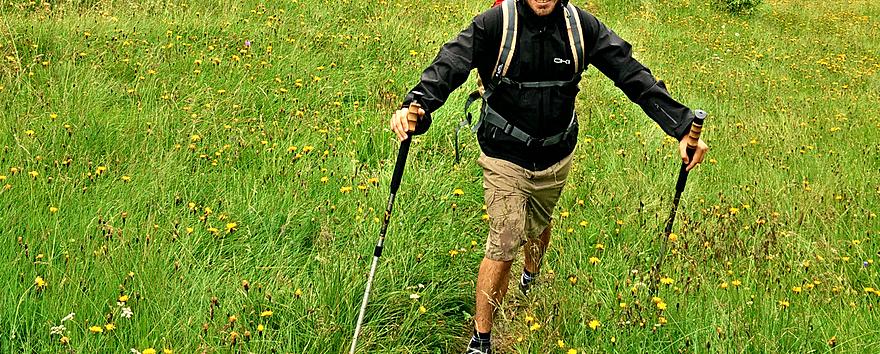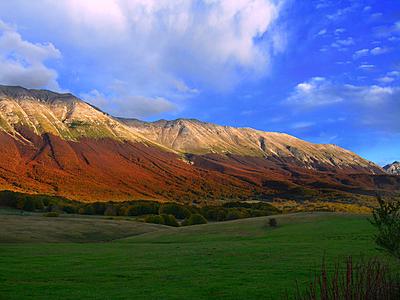


The Maiella area comprises the 12 municipalities of the Pescara area within the Maiella National Park and 2 adjoining ones that facilitate access to the extensive nature reserve.
SUGGESTIONS
Hermitages These are absolutely fascinating, being hewn into the cliffs of Mount Morrone, set in sheer ravine walls and linked by tortuous paths. The one leading to the hermitages of S. Spirito, S. Bartolomeo, S. Onofrio and S. Giovanni is immersed in silence: the spiritual journey of the hermits is revealed in all its pristine beauty when you discover the frescoes, rock paintings and records of their faith and sacrifice.
Abbeys San Liberatore is the most monumental of the abbeys of Maiella. With its stark white architecture, it stands on the green slopes of the mountain of Serramonacesca. The abbey of S. Maria Arabona has a more romantic atmosphere. Its ancient cloister looks like a perfect setting for exchanging vows of love, though an air of mystery hangs over it.
Wines of Maiella The way the vineyards in Abruzzo model the landscape is enchanting. Here we are in a segment of Abruzzo clinging to the slopes of Maiella that seems to be the birthplace of Montepulciano. An exciting region, with a rugged landscape and harsh climate. Visit the wineries, where you can linger and taste these tangy wines, endowed with subtle and elegant aromas by the land and climate. It is an opportunity not to be missed.
Maiella lamb This is the basis of many dishes in Abruzzo cuisine: its intense aroma evokes the perfume of mountain pastures and it tastes best grilled on the embers without any seasoning apart from a pinch of salt. This tender meat, properly hung and skilfully cooked to release its rich aromas and flavours, is an unforgettable taste experience.
Maiella bread The plateau of the Giumentina Valley, inhabited since Paleolithic times, is a cradle of heritage grains. Ground into flour, kneaded with yeast and baked in wood ovens they make fragrant loaves. From Sant’Eufemia a Maiella to the rural villages, the rediscovery of these heirloom varieties of flour has revived the passion for traditional bread, whether black or white.
FOOD & PLACES
 Maiella National Park High mountains, green valleys, crystal-clear streams, prehistoric sites and archaeological discoveries, agro-pastoral settlements, protected wildlife and lush vegetation provide many opportunities to actively experience nature. The network of trails is extensive and well organised: you can traverse them on foot or horseback, by mountain bike or on snowshoes and skis in winter. Of great interest are the new paths laid out to explore the park’s fauna, such as wolves, bears, red and roe deer, wild boars, eagles and many other creatures.
Maiella National Park High mountains, green valleys, crystal-clear streams, prehistoric sites and archaeological discoveries, agro-pastoral settlements, protected wildlife and lush vegetation provide many opportunities to actively experience nature. The network of trails is extensive and well organised: you can traverse them on foot or horseback, by mountain bike or on snowshoes and skis in winter. Of great interest are the new paths laid out to explore the park’s fauna, such as wolves, bears, red and roe deer, wild boars, eagles and many other creatures.
Eco-museum of the Giumentina valley Surrounded by the imposing mountains of Maiella and inhabited ever since the late Stone Age, the fertile plateau of the Giumentina Valley is considered one of the principal sites of this period in Italy. A guided tour takes visitors through its history, including visits to stone-built huts with corbel domes, the typical architecture of the agro-pastoral culture of Abruzzo..
Regional Nature Reserve of the Headwaters of the Pescara River With a flow of 7000 litres per second, the headwaters of the Pescara are among the most spectacular in the Apennines. Its clear waters, flowing from the Gran Sasso and the Sirente Velino Park take thirty days to travel underground before surfacing at the foot of the hill known as Colle di Capo Pescara. The nature reserve is also a WWF oasis, home to Apennine brown trout and a small population of central Italian river shrimps.
Shrine of the Holy Face Set on the slopes of the Maiella and at the gateway to the national park, the Shrine of Manoppello contains one of the most precious relics of Christianity: the Holy Face of Jesus. The sacred veil is closely associated with the name of this town, a history suspended between legend and reality with an outstanding spiritual dimension.
Popoli With the sources of the Giardino and San Callisto, and two other rivers, the Aterno and Pescara, flowing through the village, the precious sulphurous waters used for treatment in the spa make Popoli a favoured place to take the waters. Wellness and nature live in the Nature Reserve of Monte Rotondo, where the varied local fauna includes the Apennine wolf, red deer, wild cat, eagle, peregrine falcon, hobby falcon and rock partridge.
Ancient olive trees at Tocco da Casauria Majestic and imposing, the twisted trunks of these trees producing the local Toccolana or Pollice olive varieties cover extensive hilly areas in the Casauria area. They reflect the historical importance of olive-growing on these hills going back many centuries, as recorded in the medieval Chronicon Casauriense, and confer a quiet beauty on the landscape.
Maiella Cheeses The sheep’s and goat’s milk cheeses of Maiella are fragrant with the mountain pastures. They are divided into transhumant cheese and the rest: the former are ripened under hay and bran, the latter aged for varying periods, but all are made from mixed ewe’s and goat’s milk. The flavour is unique: try the goat’s milk ricottina on Solina wheat bread at San Nicolao (near Caramanico).
Maiella Honey The honey comes from the thousands of different plants that bloom in the pristine grasslands. Wildflower and acacia honey, pure and wholesome, made by small artisanal family businesses run by people like Pietro Amoroso, an octogenarian beekeeper at Caramanico Terme (whose produce won the title of “Italy’s finest honey” at Montalcino in 2008) or Carlo Palumbo at Roccamorice.
Toccolana olives High-yielding and late-maturing, the Toccolana or Pollice olive cultivar is characteristic of the areas of Tocco da Casauria, Castiglione a Casauria and Torre dei Passeri. This unique and prized olive produces oil with fruity, grassy flavours, with notes of green almond and tomato, contributing to the composition of the Aprutino Pescarese DOP extra virgin olive oil, together with the Dritta and Leccino varieties.
Maiella Cereals The fertile plateau of the Giumentina Valley, in the heart of the Maiella Park, is the cradle of heritage cereals which gave rise to the modern wheat varieties, both hard and soft. Old ecotypes of soft wheat found locally, such as Solina, frasinese, casorella, gentile rosso, as well as autumnal emmer wheat, millet, barley and saragolla wheat, are grown organically by farmers who are the custodians of biodiversity in Maiella.
Maiella Liqueurs Il Centerba, also known as Liquore Centerbe, is emerald green with a stiff alcohol content (up to 70%) and an intense bouquet of mixed herbs. Genziana (gentian liqueur), made from cold infusions of the roots of the plant in alcohol or wine, is straw-coloured, intensely flavoured, with a strong bitter note. Ratafia, a sweet liqueur produced by macerating local sour cherries in red Montepulciano d’Abruzzo wine, is a dark cherry red with an alcohol content of no more than 22%.
Book your holiday
Weather forecast
Traveller information
Contact us »
+39.085.8561222
info@terrepescaresi.it
Our travel offers
Exclusive experiences

Gran Sasso d'Italia
Follow us!
